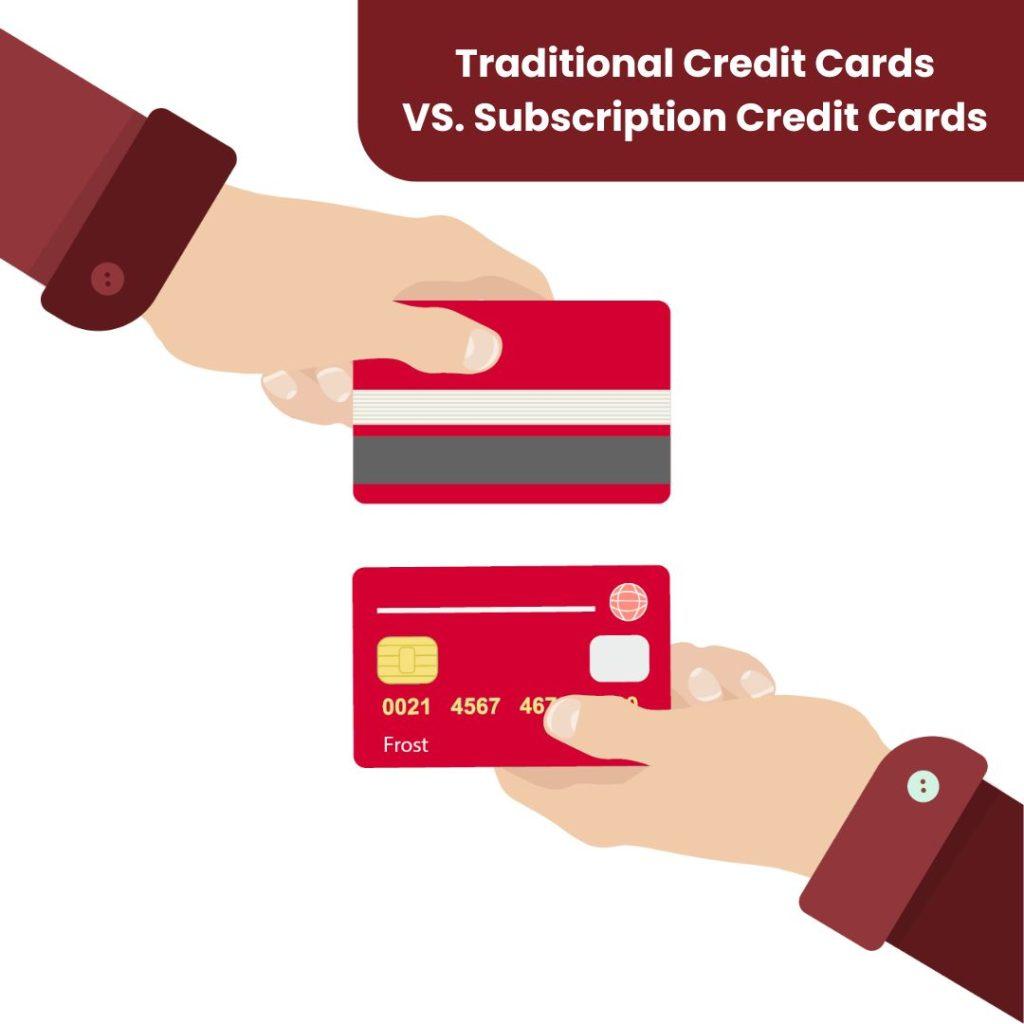For decades, Canadian credit card users have grown accustomed to a familiar model: annual fees, interest charges on carried balances, and tiered rewards. But a new wave of financial technology is challenging that traditional framework. A small but growing number of subscription credit cards in Canada are rethinking how plastic works—ditching high-interest models and opting for flat monthly subscription fees in exchange for meaningful perks, simplified usage, and sometimes, even zero interest.
Could this be the next fintech revolution? As Canadian consumers become more discerning about how and where they spend, subscription-based cards may represent the next step in reshaping our relationship with credit. This article explores how these new products work, what makes them different, and who stands to benefit the most.
What Are Subscription-Based Credit Cards?
A subscription credit card works similarly to streaming platforms or meal kit services: you pay a fixed monthly fee to access certain benefits. These cards often don’t charge interest on purchases (or offer a grace period), and they usually bypass traditional annual fees. In return, users gain access to a suite of curated perks, such as increased cash back, travel rewards, or other lifestyle-related bonuses.
Unlike traditional cards that profit heavily from interest charges, subscription cards flip the business model—generating revenue from reliable monthly payments rather than variable borrowing fees.
Why Are Fintech Companies Pushing Subscription Models?
Canada’s credit card landscape is competitive but often dominated by big banks. Fintech firms are finding ways to stand out by rethinking fee structures. The subscription model allows startups to create transparent, predictable pricing while appealing to younger consumers wary of revolving debt.
A subscription card can serve as a compelling alternative for those who pay off their balance in full each month and want to maximize rewards without navigating complex interest charges or rotating categories. This model also enables fintechs to offer niche rewards or partner integrations—think exclusive deals with retailers, or discount code access.
These new players are capitalizing on a shift in consumer expectations. Many Canadians—especially Millennials and Gen Z—prefer services that are easy to manage, digital-first, and free from the fine print that often defines traditional credit. Subscription cards are typically built around mobile apps that offer intuitive design, real-time spending insights, and clear rewards tracking, giving cardholders more control.
Moreover, by focusing on flat-fee revenue instead of interest charges, fintech companies can align their incentives with the user’s financial well-being. Instead of profiting when customers fall into debt, they succeed when users stay engaged and find value in the perks. This model promotes long-term loyalty, and in a crowded market, that’s a serious competitive edge.
Subscription-based cards also allow more flexible reward partnerships, such as linking card activity to savings on platforms like Expedia, or syncing with curated merchant offers—from Dell coupon code savings to exclusive e-commerce perks. For fintechs looking to disrupt the status quo, the subscription approach represents not just a payment model—but a new kind of customer relationship.
Key Features That Set These Cards Apart
While subscription cards are still an emerging category in Canada, their standout features usually include:
- Flat monthly fee: Typically ranging from CAD 5 to CAD 20.
- No interest on purchases: Often structured to avoid traditional interest accrual entirely.
- Premium rewards: Often competing with top-tier cards, including Amex Cobalt cash back.
- Straightforward structures: Transparent benefits and easy-to-understand pricing.
- Digital-first platforms: Most are app-based and built for mobile-savvy users.
These features combine to offer an experience that’s cleaner and more user-centric—particularly appealing for digital-native Canadians.
Who Stands to Benefit?
Not everyone will benefit equally from this model, but subscription cards could be ideal for:
- Frequent spenders who consistently pay off balances and want to maximize perks.
- Millennials and Gen Z users comfortable with digital platforms and subscriptions.
- Freelancers and entrepreneurs seeking more predictable financial tools—especially when paired with something like the Amex Business Platinum Card.
- Lifestyle-driven consumers who prioritize exclusive access, brand perks, or enhanced rewards at merchants, or through platforms that offer promo codes.
That said, those who frequently carry a balance or rely on low-interest promotional offers might find traditional cards better suited to their needs.

The Appeal over Traditional Credit Cards
Traditional credit cards have long used interest rates and annual fees to generate revenue. Subscription cards change this paradigm, making their appeal clear for a certain segment of users:
- No more surprise charges: A fixed monthly fee replaces a variable interest rate, allowing users to better budget.
- More value, less complexity: With the right subscription, perks can outweigh the cost—similar to how a Tangerine Cash Back Card appeals through simplicity and everyday value.
- Avoiding debt traps: Flat-fee models encourage responsible spending since they’re often designed for people who pay off their balance in full.
When compared side-by-side with traditional premium options like the Amex Gold credit card, the subscription model can offer comparable benefits with a different structure.
Risks and Considerations
Of course, no model is without drawbacks. Some of the key concerns around subscription-based cards include:
- Monthly fees add up: If you’re not using the card enough, the flat fee might not be worth it.
- Limited product options: While the market is growing, choices are still slim compared to more established cards like the Platinum Card Amex options.
- Smaller support infrastructure: Many subscription cards come from fintech startups, which may not offer the robust customer service or wide merchant acceptance of traditional institutions.
- Behavioral impact: Flat fees could potentially encourage overspending, under the illusion of “maximizing value.”
Understanding your own financial behavior and spending habits is key before switching to a subscription model.
Could Subscription-Based Cards Replace Interest Models?
It’s unlikely that subscription-based cards will completely replace traditional ones, especially in a market like Canada where credit products are deeply ingrained in consumer culture. Still, they could carve out a meaningful niche—especially for users drawn to simplicity, transparency, and flexibility.
These cards often appeal to those who pay their balances in full and want to avoid high interest charges while still accessing premium features and cash back benefits. They may even influence legacy issuers to rethink fee structures or add hybrid models. For example, it wouldn’t be surprising to see traditional players test out interest-free subscription tiers alongside more conventional offers like the Rogers Red World Elite Mastercard. Over time, this could usher in a more consumer-friendly era in Canadian credit—where choice isn’t just about rewards, but also about how the system itself is structured.
A Glimpse into the Future: What’s next?
With younger Canadians embracing budgeting apps, digital wallets, and fintech services, it’s only natural that credit products evolve too. We may see cards bundled with digital banking accounts, or integrations with popular e-commerce brands through exclusive offers—such as a Dell coupon code, or Staples coupon code.
As subscription models mature, there’s also the potential for personalized tiers—where users choose features that match their lifestyle, such as travel perks, dining rewards, or even eco-conscious spending options. These cards could offer more than just transactions; they might serve as access points to curated experiences, financial coaching tools, or member-only deals from brands like Reitmans.
Whether paired with familiar platforms like Priceline or evolving into multi-service financial hubs, subscription-based credit cards have the potential to dramatically alter how Canadians think about borrowing, spending, and rewards—shaping a future that values flexibility, transparency, and meaningful benefits over traditional interest-based models.
Demanding Smarter
Subscription-based credit cards are more than just a fintech trend—they’re a signal that consumers are demanding smarter, fairer, and more transparent financial products. For Canadians tired of confusing fees and complex rewards programs, this new model offers a refreshing alternative. These cards often provide predictable monthly costs, premium features, and simplified cash back structures that appeal to value-driven users. Whether they’ll reach mass adoption remains to be seen, but the innovation they bring is undeniable.
Financial and Lifestyle Needs
At Great Canadian Rebates, we’ve noticed a growing interest in how subscription-based financial tools are changing the way Canadians use credit. As more people look for smarter ways to manage spending—whether through a streamlined subscription credit card, a top rated cash back credit card, or enhanced travel perks—it’s clear that the financial landscape is evolving fast. Our platform is designed to help you explore these developments while earning generous cash back rebates. Whether you’re comparing options like the American Express Cobalt Card, seeking out rebates, or planning to make the most of a new Rogers World Elite Mastercard, we make it easy to browse and apply. Great Canadian Rebates is an online platform that lets members compare credit card options available in Canada and apply for the one that best suits their financial and lifestyle needs


